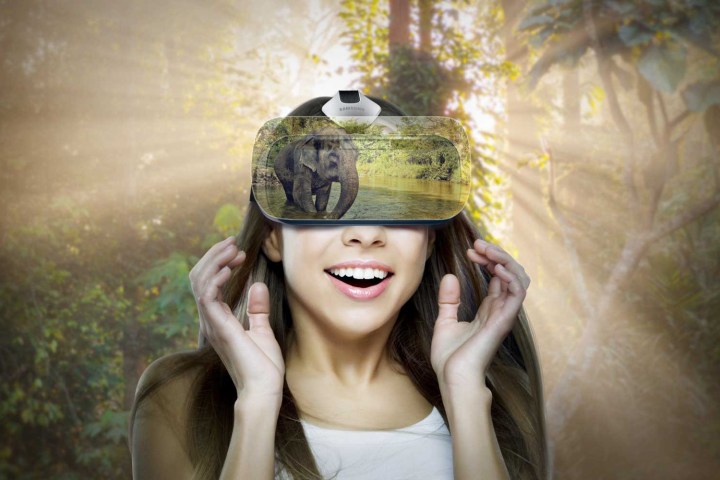
If you’re the owner of a Gear VR and one of Samsung’s recent flagships, you know how much storage space can get eaten up by video content. You’ve probably also noticed how very few videos actually seem to be rendered at its 1440p display resolution. The main reason for this is that the video you’re typically looking at is being rendered all around you, regardless of whether you’re looking at it or not.
Most phones simply can’t handle that type of pressure, so a lot of the VR video you see is rendered at a lower total resolution to allow your phone to handle all of that extra rendering. It also ensures you typically don’t run out of storage capacity the very same day you bought the phone. The result is that you simply can’t watch a lot of videos at their native resolution, and this is where Adaptive Focus comes in. Since it only renders the area that you’re focusing on, it can allocate hardware to render a smaller area at the highest possible resolution instead of simultaneously rendering all the footage that is in your peripheral vision.
Digital Trends talked to YouVisit’s CEO and co-founder, Abi Mandelbaum, as well as the company’s CTO, Taher Baderkhan (who is also a co-founder). We also had the opportunity to try on an early demo of the technology using a Galaxy Note 4 as well as the Gear VR Innovator Edition, to get a sense of how the technology worked. Both executives are keen to push Adaptive Focus as a solution for streaming, rather than playing files saved locally on your phone.
Mandelbaum explained that “Streaming is what most people do now. The way we look at it, the reason people download is because of the low resolution they have to look at when they stream 360-degree video. As a result people say ‘streaming isn’t good enough, we’re going to download it.’” Baderkhan added that “The amount of data the user will save will be around 80 percent. A video that we send at 1mb/s in adaptive focus will be equivalent in quality to a video sent at 5mb/s in standard mode,” he says.

Our experience with Adaptive Focus was promising but there were disturbing delays as you moved your head around. According to YouVisit, the delay was 2.5 to 3 seconds, and that felt similar to our experience. The company is making strides to lower that number though, and Baderkhan says that the most recent version has a delay that’s been shortened to between 0.5 to 1.2 seconds. In the demo we could switch between standard 360 video to a Adaptive Focus version, and while the standard had artifacts (and more of them than we usually see from a 2GB VR video file), the dynamic video footage certainly got its point across.
It’s easy to see how this would save a lot of data for VR consumers on the move, but it’s hard to say whether we’d prefer uninterrupted playback or higher resolution. On the other hand, these sorts of technical issues should be possible for YouVisit to patch up in the future and perhaps the experience wouldn’t disrupt immersion as much with shorter delay times.
For now, Adaptive Focus is limited to YouVisit’s own content, but the company is also working to create an SDK for other app developers. The video format is intended to be released sometime in the second quarter of 2016, and if the developer’s plans come to fruition we may be looking at a wider developer adoption and even lower video delays after the format is launched.
Editors' Recommendations
- This new VR headset beats the Vision Pro in one key way and is half the price
- Disney just reinvented the VR treadmill, and it looks amazing
- Forget VR. Airglass made me actually enjoy video calls
- I streamlined my PC VR setup, and now I use it more than ever
- How this new Quest VR app totally sold me on exercising in virtual reality


